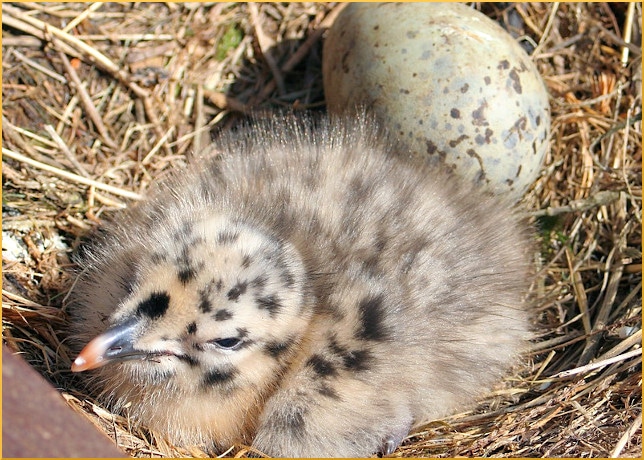
In 1960, G.I.C. Ingram published “Displacement Activity in Human Behavior.” The product of a different time, it was replete with classic literary references, and was largely about hobbies. He quoted an earlier authority, Niko Tinbergen, who had published “The herring gull’s world” in 1953. Ingram said that Tinbergen’s work…
[…] describes the reactions of two herring gulls contending for nesting territories on a sand dune. If both the birds are standing near the edges of their territories so that in each the urge to drive off the intruder is matched by the urge to retire into the heart of the territory, they may suddenly leave their confrontation for a few moments and pull with their beaks at grass stems.
It could be reasonably suggested that this seems to make certain assumptions about animal behavior; for instance, that aggression is always the chief and only motive for anything. It seems to suggest that creatures should prefer confrontational behavior at all times. It might be interpreted as an implication that to remove the focus from hostility, even for a moment, is some type of aberration. It seems to deny the possibility that animals might adapt their behavior in a preference for peace, love, and understanding.
Overall, there seems to be a lot of anthropomorphizing in this field. People want to ascribe motives that may be either too harsh, or too kumbaya. A gull is an animal accustomed to being in vigorous motion, much of the time. Maybe he’s just intrinsically uncomfortable with immobility. He wants to be doing something, not simply standing there like a dummy.
Also, maybe he does not particularly want to go to war with his neighbor, either — and what would be wrong with that? However, he does not have a keychain or a cigarette for a prop, to interact with. For miles around, there is nothing but grass, and his options are limited.
Are humans hubristic?
Tinbergen had said that if an animal is stimulated to want to act out a basic drive, but then that action is frustrated, one possibility would be that an outlet could be found by “inducing fragments of the pattern of behavior properly belonging to another drive.”
For instance, nest-building is a necessary and proper activity that requires stalks of grass. Technically, grass-pulling was seen as a “fragment” of a different, major part of life, nest-building. It is also one of the few available actions in that time and place. It may be that nest-building is the furthest thing from a gull’s thoughts, but there is nothing else to do out there but futz around with grass, and maybe humans tend to read too much into it.
Now, skip ahead several years, to 2009, when for Nature, John Whitfield wrote about researchers who duplicated Tinbergen’s 1947 work on herring gulls. That study was not about nest-building, but about the begging behavior of chicks. Immediately, childhood obesity-related ears perk up, because what would these chicks beg for other than food? Without going into excruciating detail, the study was about different-colored spots on the beaks of parent gulls. Whitfield wrote,
The story that made it into the textbooks is that chicks have a powerful innate tendency to peck at red dots, which has evolved as a way of getting their parents to feed them. The original paper, however, shows that Tinbergen found that chicks actually pecked more at a black dot than a red one.
Tinbergen never fully tested this idea. Instead, he did another experiment… He was initially explicit about this, but by the time of his books […] he had stopped mentioning this correction, and presented the finding as if it were based on unmodified data.
Tinbergen did other experiments with gull chicks — showing for example, that they will peck even at a disembodied red spot on a stick — so he may have felt he had made his point. He may also have simplified his results for rhetorical purposes.
At any rate, the discrepancy attracted the attention of later academics, but some found “There’s no hint of fraud in Tinbergen’s work […] and we shouldn’t think any less of him.” Sure, it was sloppy, but for the time, it was advanced work. Hans Kuuuk, Tinbergen’s former student — and biographer — wrote, “He’d often simplify and gloss over complications: if these publications appeared now, they’d get hammered, but the ideas are lovely.”
Your responses and feedback are welcome!
Source: “Displacement Activity in Human Behavior,” Wiley.com, 1960
Source: “Classic behavioural studies flawed,” Nature.com, 03/24/09
Image by John Haslam/CC BY 2.0

 FAQs and Media Requests:
FAQs and Media Requests: 











